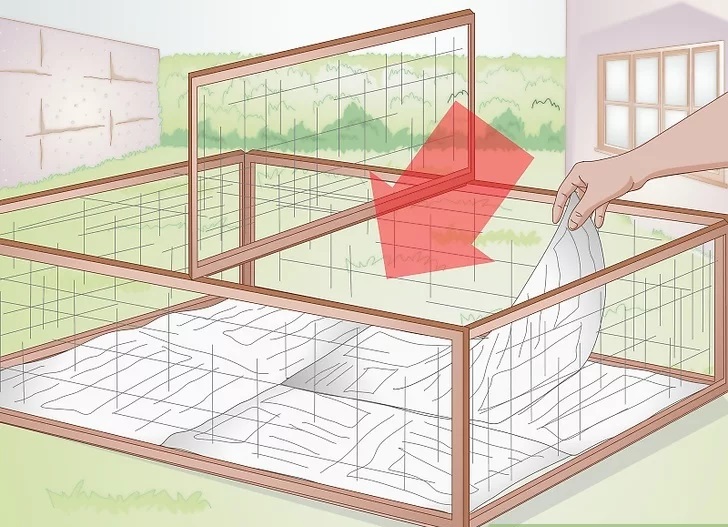Rabbits are undoubtedly the cutest animal to keep as pets. Before taking a rabbit to its new home, it is urgent to make a living space for this adorable little animal. The rabbit hutches can be suitably placed both indoors and outdoors that you find in pickmyperfect.com. But, in our opinion, outdoor cages are ideal as they are more open to any activities which our little pets will love. Most people believe that small cages are suitable for keeping one or two rabbits, but the more space, the happier the animal will be. Although some ready-made hutches are available in the market, you can get a new one made according to your needs. In this article, we will discuss that, what is the best way to set up a rabbit hutch? How to make it more spacious, comforting, and relaxing for the little fur-ball to play around, relax and sleep.

While preparing for a new hutch for the bunnies, make sure that you measure the dimensions accurately. The cage must be about three feet above the levels of the ground. It will keep the rabbits safe from any predators and other carnivores. The flesh-eating animals like raccoons, dogs, and cats will try to come after your rabbits and will those away without letting you have a little idea about what happened to the poor souls. These little beings need a security hide-away to feel safe and protected from these deadly animals. The fence around the bunnies should be buried and dug deep into the ground, almost feet or two. In this way, the dogs will not be able to dig under the cage.
Cages are best for a short period because the rabbits are fully visible, and there is a lot of exposure to the little souls. By nature, rabbits don’t like a lot of exposure to the sun and the outside environment. So, they quickly feel stressed and gloomy. They want to have some privacy and for that a hutch is a much better option than a cage. A hutch is more substantial and robust. It is much suited to keep outdoors because of its size and overall look. Mainstream hutches have a chicken wire net with a wooden casing. The bunny gets the outside activities from the net door. Wood continues to be an outstanding option because it has excellent thermal characteristics. It keeps the rain, chill, and wind away in the winter season, but also contributes to providing cover in the summer.
A wire cage is a classic for interim adaptation. Like when you want to place the cage in the living room. But never rely on the rabbits; they have a habit of chewing everything. And if you make them habitual of staying in the lounge, they will end up biting on the electric wires. The age must always have small hiding and a box where they can sleep and rest.
Make assured the cage has a firm base or a floor. A lot of bunnies bear a malady known as Pododermatitis. Pododermatitis influences the skin covering the bone of the hock when it gets in touch with the ground. In this condition, they receive pressure ulcers on the hind legs by consistently lying on wet bedding or hard floors. The wire net of a cage is inappropriate flooring and very uncomfortable for the little bunny. If the cage has a wire base, you will necessitate coating this with anything, such as a portion of plywood, and then wrapping that with covers and the beddings.
Spot clean the bedclothes daily, by bailing out areas stained with pellets or urine and then supplanting with clean hay. Ideally, wash the cage out solely for one time in a week. Rabbits will bite a bed or blanket, so it’s more satisfying to provide a uniquely snuggly and deep pile of straw within a hide or box. Stuff the litter box with a layer of nontoxic litter, newspaper, and a top layer of hay. Change out the feed every day, and replace the remainder of the litter box weekly. Never use cat litter, especially tramping litter, as it can be deadly to bunnies.
The grass is the perfect meal for rabbits, and hay is an excellent replacement. Where possible, feed your rabbit on forage alone. That way, their teeth will be retained in immaculate order, and they won’t grow overweight. Give a daily treat of vegetables or fresh fruit, but try to supply something distinctive every day to formulate a balanced diet. If you have more rabbits, have one bowl for each bunny, plus a spare. Locate the pots around the cage so that one rabbit cannot monopolize all the containers.

